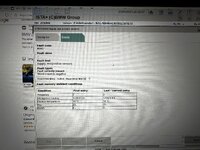I'm troubleshooting another problem with my 2009 E89. I had a roof hydraulic line break a few weeks ago. I ordered a repair kit and got that fixed. I had some normal movement of the roof right after fixing it, but then it gave a fault after the roof was completely closed. I'm using the ProTool app and cable with my phone and found the A6A5 code which then shows "Supply, End-position Sensors". I searched online and found this relates to the CTM and supply voltage to all of the end-position sensors. I'm suspicious of the battery (seems to have a date code from 2019) but I can measure 12.5 volts at the battery when the engine is not running. Had the car sitting for 20 min (engine off) and the running lights & tail lights stayed on and then the battery voltage measured 11.75 volts (on 2 different meters). I removed liner panels in the trunk to get access to the CTM. On the 41 pin connector on the CTM I measured the same voltage on the large Red wire that I measured at the battery (11.75 to 12.5 volts as above). I don't know what the normal voltage should be on the brown wires that go to all the end-position sensors. I suppose there could be a problem with the CTM voltage output, but it seems very unlikely that the CTM would have failed at the same time or immediately after I had the hydraulic line leak. My next step will be to put in a new AGM battery since I have seen numerous posts about the importance of having a very good battery and the AGM type is recommended. Any help that any of you have regarding the A6A5 code would be appreciated.
>
Troubleshooting Code A6A5 Supply, end-position sensors
- Thread starter nevwagner
- Start date
